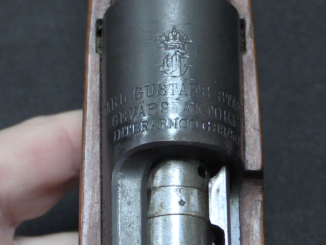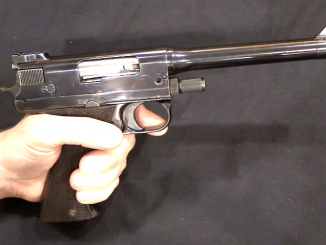This is Lot 2137 in the upcoming October 2019 Morphy Extraordinary auction.
The US Congress passed a Militia Act in 1808 to provide funding for military supplies, and one of the immediate resulting contracts was to Simeon North for 1000 pairs of Model 1808 Navy pistols. These were the first pistols contracted by the fledgling US Navy, and they specified a .64 caliber flintlock with a 10.5 inch barrel and a belt hook on the left side. The guns came in at 2 pounds, 14 ounces (1.3 kg). After the initial contract for 1000 pairs in June of 1808 (at $11.75/pair), a second contract was signed in December 1810 for an additional 500 pairs (this time at $12/pair).




I apologize for being nit-picky, but as a native of Berlin, Connecticut, I feel it is important to correct Ian’s pronunciation: The first syllable of ‘Berlin’ is stressed, rather than the second (like in the Germany city). The story the locals pass around is that we changed the pronunciation of the name during WWI because we wanted to distance ourselves from the Germans, even though the town remains named after Berlin Germany. So maybe Simeon North pronounced it like Ian does…
That is probably just a ex post facto explanation folklore came up with. A shift in which syllable is stressed just happens over time with language changing.
Back to the naval “handcannon”: Is .64″ calibre a usual caliber for the time? Seems a bit big to me.
I didn’t know our sea service pistols had a tiny bore of .54, even the French used bigger calibres. We should have used .75 with chain shot, to demand our payments for tea.
The world could have been so different; pay your tea tax. Click. Yes Sir!
Thanks.
Square chain shot against Turks.
https://m.youtube.com/watch?v=MhfuuKiTcYQ
Puckle gun, logic.
Every line of that old iron is graceful.